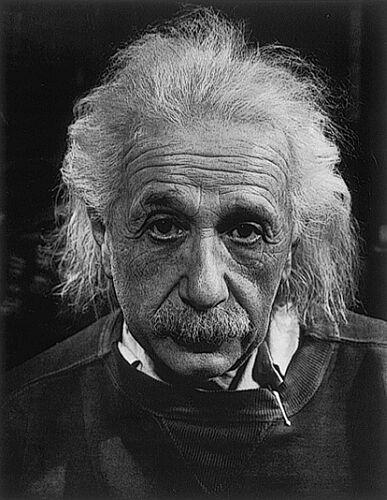 I have dyslexia. Reading, writing, remembering and organizing are all difficult for me, and for the early part of my life – certainly until I was an adult – people, teachers in particular, labelled me as lazy and stupid until the point I was officially ‘diagnosed’. As such, I struggled throughout school with the more academic subjects, exams were a nightmare and convincing teachers that I was honestly trying hard was a challenge. I hated school and education as a consequence, because years ago dyslexia was not commonly understood.
I have dyslexia. Reading, writing, remembering and organizing are all difficult for me, and for the early part of my life – certainly until I was an adult – people, teachers in particular, labelled me as lazy and stupid until the point I was officially ‘diagnosed’. As such, I struggled throughout school with the more academic subjects, exams were a nightmare and convincing teachers that I was honestly trying hard was a challenge. I hated school and education as a consequence, because years ago dyslexia was not commonly understood.
However, one skill I have always had is creativity, and as I found it harder to achieve great things academically I put all of my energy into making, building and creating. I come from a very creative family, so my Dad and I would build and construct anything from cars to model airplanes to DIY projects around the house. What I wasn’t able to learn through textbooks I learned with my hands, tinkering nonstop to uncover the secret anatomy of nearby machines, gadgets, and electronics.
Eventually this mindset of making led me and my company, CEL, to the 3D printing space, as I’m not only captivated by the concept of bringing ideas to life with the technology, but it’s an ideal medium for expression and exploration for those with dyslexia, as it directly engages with creative minds. Where it’s hard to decipher numbers and letters it’s easy to create and design.
And those with dyslexia are creative—take for instance some of history’s largest figures: Richard Branson, Albert Einstein, Beethoven, Thomas Edison, and Steve Jobs. All were diagnosed with dyslexia, and all of them were immensely creative with incredible contributions to their respective fields. Einstein had physics, Beethoven had music, and Edison had his inventions. Each had a  channel to unfurl their creative prowess, helping them to manage their dyslexia and overcome the challenge of reading and comprehension with their passion for discovery and creativity.
channel to unfurl their creative prowess, helping them to manage their dyslexia and overcome the challenge of reading and comprehension with their passion for discovery and creativity.
3D printing, I believe, follows a similar vein of thought. By its very nature, it engages with minds that are inherently creative, allowing users to create something with extraordinary detail and precision without having the necessary skill set to manufacture with traditional tools and materials. It enables users the ability to edit, recreate, and make a model better and better, allowing those with dyslexia to directly engage with a language they understand—visuals. It’s also a safe medium to let children explore more hands-on technical fields as well. While you can’t give a Stanley knife and a saw to a child, you can give them a 3D printer to explore and tinker, as most come with safety features today that prevent access to components when hot (our printer, Robox, for instance has this security feature).
3D printing lets those with dyslexia reveal talents to themselves that are otherwise concealed, opening their interest into STEM in ways that textbooks and complex formulas cannot. Traditionally, academia has prevented those with learning disabilities from excelling well within certain fields, especially if that disability goes by unnoticed and undiagnosed. Dyslexia is one of those disabilities that can fly under the radar; I myself not being diagnosed until I was 16 before attending university. Children with dyslexia find it much harder to perform as well as others, across a traditional curriculum, making it a tragedy that creative subjects from schools are continually being removed as a result of shrinking budgets.
With a readily available 3D printer either at home or brought into a schools’ technology department, families and educators alike can find ways to help their children with dyslexia excel, allowing them to realize how important and special they are, despite being unable to read or write well. It allows affected children to demonstrate their skills and turn an idea into a reality where they can’t via verbalization or writing.
The benefits of 3D printing now goes beyond the usual streamlining of the prototype process and allowing homeowners to print specific parts for their own repair work—it can also serve as an educational tool to help children with learning disabilities realize not how they’re disadvantaged in the realms of reading and writing, but instead empowered to create and manufacture with 3D printers.
Subscribe to Our Email Newsletter
Stay up-to-date on all the latest news from the 3D printing industry and receive information and offers from third party vendors.
You May Also Like
3D Printing Financials: Fathom Struggles in Financial Quicksand During Critical Transition
Facing a year of key transitions and financial pressures, Fathom (Nasdaq: FTHM) has filed its annual report for 2023 with the U.S. Securities and Exchange Commission (SEC). The document outlines...
Latest Earnings Overview for Australian 3D Printing Firms Titomic and AML3D
Australian 3D printing manufacturing firms Titomic (ASX: TTT) and AML3D (ASX: AL3) reported their financial results for the period from July to December 2023, marking the first half of their...
3D Printing Webinar and Event Roundup: April 7, 2024
Webinars and events in the 3D printing industry are picking back up this week! Sea-Air-Space is coming to Maryland, and SAE International is sponsoring a 3D Systems webinar about 3D...
3D Printing Financials: Unpacking Farsoon and BLT’s 2023 Performance
In the Chinese 3D printing industry, two companies, Farsoon (SHA: 688433) and Bright Laser Technologies, or BLT (SHA: 688333), have recently unveiled their full-year earnings for 2023. Farsoon reported increases...
































